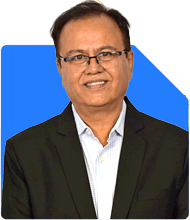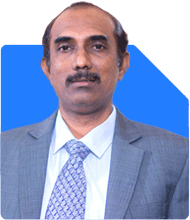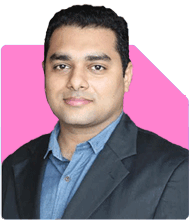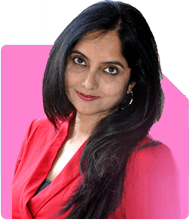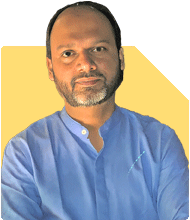Respected Sir,
I am 36 years old and a father of 2 sons
I am currently saving about 50000 to 60000 per month. I have a few FDs of about 700000 and about 700000 in the bank as savings. Mutual fund investments span to about 10000 per month.
Can you guide me on financial planning to achieve a good capital by the time my children grow up. Currently they are 6years and 2years old.
What and in which way can i invest.
Please note that 50000 is my net savings. after all deductions
Ans: Your savings discipline is highly appreciable. At age 36, with two young children, you are at the right stage to create solid long-term wealth. Your current monthly saving of Rs. 50,000 to Rs. 60,000 gives you a strong foundation. Let's build a 360-degree roadmap for you.
» Understand the Core Financial Objectives
– Build wealth for both sons’ higher education and marriage.
– Ensure family protection with adequate insurance.
– Maintain financial independence after retirement.
– Keep some emergency corpus intact.
» Assessing Your Current Financial Strength
– Rs. 7 lakh in FDs is a good conservative holding.
– Rs. 7 lakh in savings account is excessive.
– Rs. 10,000 SIP monthly is a strong start.
– Rs. 50,000+ surplus monthly is a good growth lever.
» Emergency Fund Reassessment
– Maintain only Rs. 3 lakh in savings bank for liquidity.
– Keep Rs. 5 lakh in a short-term liquid fund.
– Avoid large idle funds in savings bank.
– This ensures better returns and liquidity balance.
» Insurance – Life and Health Protection First
– Buy a pure term insurance plan of Rs. 1.5 crore.
– Keep the policy term till your retirement age.
– Ensure spouse also has at least Rs. 50 lakh coverage.
– Have a family floater health insurance of Rs. 10 lakh.
– Do not rely only on employer-provided health cover.
– Include Rs. 5 lakh personal accidental insurance too.
» Children’s Education & Marriage Planning
– Your elder son has 12 years before higher studies.
– Your younger son has 16 years before the same need.
– Allocate goals separately for each child.
– Prioritise education before marriage corpus.
– Target inflation-adjusted corpus at education start.
» Ideal Investment Allocation from Rs. 50,000–60,000
– Rs. 30,000 to mutual funds for long-term wealth.
– Rs. 10,000 to short-term debt or hybrid funds.
– Rs. 5,000 to gold savings (SGBs, not jewellery).
– Rs. 5,000 to children’s specific education SIPs.
– Keep Rs. 5,000 flexible for ad-hoc use or step-up.
» Review and Upgrade Mutual Fund Strategy
– Rs. 10,000 SIP now should be increased to Rs. 30,000.
– Continue only well-rated diversified equity funds.
– Focus on multi-cap, mid-cap, flexi-cap, and small-cap.
– Avoid index funds due to lack of downside protection.
– Index funds follow market blindly. No active management.
– They do not avoid risky sectors or take advantage of cycles.
– Actively managed funds offer expertise, flexibility, and insights.
– Good fund managers actively switch based on valuation.
– Their performance can beat benchmarks in volatile markets.
» How to Invest in Mutual Funds – Regular vs Direct
– Prefer regular mutual funds via Certified Financial Planner.
– Avoid direct plans unless you have high fund knowledge.
– Direct funds lack advisory, reviews, and rebalancing help.
– Mistakes in direct investing may cost more than saved commission.
– A qualified CFP-backed MFD adds strategic advice and discipline.
– They track market trends and re-align funds when needed.
– Regular plans ensure guided wealth creation and goal alignment.
» Child-Specific Mutual Fund Planning
– Start two goal-specific SIPs – one per child.
– Align elder child’s SIP to a 12-year horizon.
– Align younger child’s SIP to a 16-year horizon.
– Use combination of flexi-cap, mid-cap, and multi-cap funds.
– These categories provide better long-term growth for goals.
– Increase SIP amount every year by 10-15%.
» FD Reallocation Strategy
– Move Rs. 4 lakh from FD to debt mutual funds.
– Use dynamic bond or short-duration funds.
– These provide higher tax-adjusted returns over FDs.
– Keep Rs. 3 lakh in FD for very short-term needs.
– FDs are not suitable for long-term goal planning.
– They offer low post-tax returns and poor inflation protection.
» Avoid Investment-Linked Insurance Products
– If you hold LIC, ULIPs or investment insurance plans, review now.
– They mix insurance and investment poorly.
– Returns are low and insurance is inadequate.
– Surrender or make them paid-up. Reinvest into mutual funds.
– Pure term insurance plus mutual funds work better.
– Do not buy endowment, money-back, or guaranteed plans.
» Retirement Planning Should Start Now
– Don’t wait till children’s goals are done.
– Allocate minimum Rs. 5,000–7,000 monthly towards retirement.
– Choose diversified equity mutual funds for this goal.
– Add to this SIP each year with salary hikes.
– Retirement corpus needs time, not just money.
» Tax Planning within Your Investment
– Use ELSS mutual funds for 80C savings.
– They offer 3-year lock-in and better growth potential.
– Avoid tax-saving FDs and insurance plans under 80C.
– ELSS combines tax saving and wealth creation.
» Reviewing Portfolio Annually
– Track fund performance once a year.
– Replace underperformers if lagging for 2+ years.
– Consult CFP-backed mutual fund distributor for rebalancing.
– Avoid emotional decisions during market volatility.
– Stay invested based on goal timelines.
» Child-Specific Bank Schemes – Use Caution
– Avoid child plans with insurance firms.
– Returns are low and charges are high.
– SSY can be used only for girl child.
– For boys, mutual funds give more flexibility and growth.
– PPF can be used as a conservative long-term option.
– But it should not be the only tool.
» Teaching Children About Money
– As they grow, involve them in money conversations.
– Start with pocket money discipline.
– Encourage saving and delayed gratification.
– Help them build financial awareness from school age.
» Smart Use of Bonus or Windfalls
– Allocate 60% of any bonus to mutual funds.
– Use 20% to prepay any small loan or debt.
– Use 10% to improve lifestyle or gifting.
– Use 10% to add to your emergency buffer.
» Building a Flexible and Evolving Plan
– Increase SIPs every year without fail.
– Adjust allocation if income increases.
– Keep separate SIPs for each goal.
– Review each goal annually with updated needs.
– Use goal tracker tools or spreadsheet to monitor.
» Final Insights
– Your current savings potential is powerful.
– Disciplined SIPs will build wealth in 10–15 years.
– Insurance and asset allocation need fine-tuning now.
– Avoid mixing insurance with investments.
– Move idle money into more productive investments.
– Work with a CFP-backed distributor for guidance.
– Regular mutual funds bring strategic advantage.
– Stay focused on each child’s goal timeline.
– A plan reviewed yearly always stays on track.
Best Regards,
K. Ramalingam, MBA, CFP,
Chief Financial Planner,
www.holisticinvestment.in
https://www.youtube.com/@HolisticInvestment










